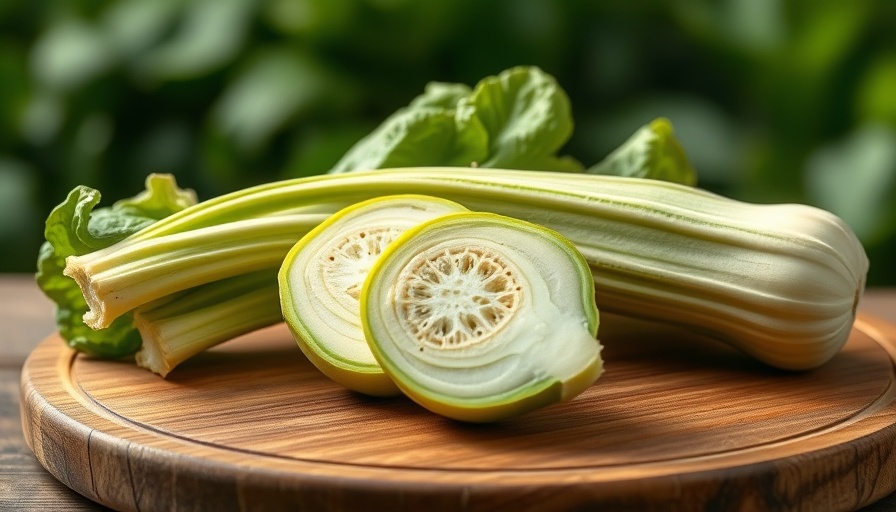
How to Store Your Kohlrabi and Maximize Freshness
Kohlrabi, often overshadowed by other vegetables, is a powerhouse of nutrients and versatility. Whether you’ve bagged some at a local farmers’ market or harvested it fresh from your garden, understanding how to store this unique cruciferous vegetable is key to enjoying it at its best. This guide will help you maximize the agricultural benefits of kohlrabi and ensure it maintains its delightful crunch over days and weeks.
Preparation is Key: Cleaning and Handling
Before putting your kohlrabi into storage, proper preparation is essential. Start by removing the greens, which not only keeps them from zapping moisture but can also be cooked or used in salads. Give the bulbs a good wash in a bowl of water to remove any dirt and sand. Once cleaned, pat them dry gently using a towel. Properly preparing your kohlrabi helps prevent spoilage and preserves freshness—two important factors for extending your harvest's shelf life.
The Right Environment: Room Temperature vs. Cool Storage
Understanding where to store kohlrabi significantly impacts its longevity. At room temperature, the vegetable can only hold up for a day or two before it starts losing flavor and texture. If you’re unable to go directly to your fridge, make sure to use it quickly. The refrigerator is a much more suitable environment, where kohlrabi can last several weeks when stored at the optimal temperature of 32°F to 40°F. Utilizing perforated plastic bags aids in maintaining the right humidity and promotes airflow, slowing the decay process.
Signs Your Kohlrabi is Going Bad
To avoid wasting any of your fresh buys, it’s important to recognize when kohlrabi is past its prime. Black spots or fuzzy white patches are red flags; these indicate mold growth. If you notice the kohlrabi feeling fibrous and hard, it’s a sure sign that the vegetables have been stored too long and should be discarded. Monitoring the condition of your stored kohlrabi will ensure you enjoy them at their best.
Keep it Cool for Authentic Flavor and Nutrition
In essence, managing the storage of kohlrabi effectively allows you to savor its crisp texture and unique flavor long after purchase. This cool-season crop may seem like a niche veggie, but it’s a powerhouse with a variety of uses, from salads to hearty soups. So the next time you're tempted to stuff kohlrabi in the fullest part of your fridge, remember that it thrives in cooler conditions and can be one of your garden's gems.
Adding Value to Your Harvest: Creative Uses for Kohlrabi
From salads to slaws, utilizing kohlrabi in various culinary creations can bring excitement and nutrition to your meals. Chop it up raw in a refreshing salad, roast it with herbs for a side dish, or sauté it to incorporate a crunch into stir-fries. Each unique cooking technique enhances its flavor and presents an opportunity to experiment in the kitchen, making the vegetable a great addition to any meal.
Seasonal Availability and Home Gardening Insights
Understanding when kohlrabi is in season can amplify its freshness and decrease storage time. This vegetable is best planted in early spring or fall, aligning with its cool preferences. If you’re into gardening, consider incorporating kohlrabi into your vegetable patch—this striking vegetable can bring not only beauty but also a nutritious punch to your table. It's a perfect fit for organic gardening practices that emphasize sustainable living.
Why It’s Essential to Know Our Produce
Knowing proper storage techniques for kohlrabi and other garden fresh produce not only reduces waste but also helps us make informed nutritional choices. Incorporating fresh vegetables into our diets promotes overall well-being and can transform the way we experience meals.
So next time you have a few kohlrabi on hand, use this guide to keep them fresh and find new culinary inspirations. Don’t miss out on this vibrant vegetable’s benefits—store it right and enjoy it longer!
 Add Row
Add Row  Add
Add 




Write A Comment